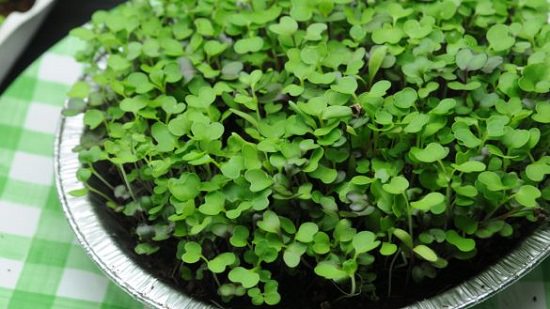Plants usually need sunlight, but do you know about Edible Plants That Grow In The Dark without ANY space? Check out this list to find out!
Sunlight is of utmost importance for a plant’s life since it is essential for photosynthesis. Contrary to this fact, some edible plants can do well without the sun, and you can grow them indoors without a lot of space!
Edible Plants That Grow In The Dark
1. Mushrooms

Though mushrooms are not plants, they are very closely related to them. They are fruiting bodies of fungi that grow in dark and humid conditions. They don’t need the sun to make their food; instead, they get nutrition from their growing medium that includes sawdust, tree bark, wooden logs, and moist straws. If you have a scarcity of sunlight, then mushrooms are an excellent option to grow in the dark.
A Tip: While growing them indoors, keep the growing medium evenly moist.
2. Sprouts

Sprouting is a process to germinate seeds and grow shoots. All you need is a mason jar, some water, and sprouting seeds. Rinse the seeds and place them in a jar, filling it three-fourth full with cool water. Depending on the seeds, they’ll sprout between 8-24 hours. As they do not require sunlight, sprouting can be done indoors.
Moreover, including sprouts in your diet is a healthy habit, as they are rich in many vitamins and minerals. Also, sprouts are an excellent source of fatty acids and fibers.
3. Microgreens

Microgreens are very young edible plants or seedlings. They are micro varieties of mature plants and highly nutritious in nature. The immature greens can be harvested in less than a month after the seeds germinate and plants are up to 1-3 inches tall. Learn how to grow microgreens in this post. Also, check out these Microgreen Growing Ideas.
A Tip: Provide indirect sunlight or artificial light for optimum growth of microgreens.
4. Wheatgrass

Wheatgrass is the fresh leaves of a common wheat plant. You can grow wheatgrass in the soil as well as in water. Soak the seeds before planting, as it facilitates the germination. Plant the seeds 1/2 to 1-inch deep directly in a pot or seed tray and keep the soil moist. It doesn’t need sunlight. It takes 6-10 days to harvest the grass. Once it does, snip it off as required, using scissors. Do successive planting for a regular harvest.
Wheatgrass has countless benefits as it’s rich in many vital nutrients. It can also be effective against cancer.
5. White Asparagus
White asparagus gets its white color due to the absence of light, growing them in a dark spot of your home will be perfect. Plant the seeds or roots (crowns) in a production bed, 1/2 inch deep and 2 inches apart, and water them moderately. They’ll take 10-12 days to germinate. Keep them buried in the soil (seeds), leaving only the top 2 inches exposed (crowns). You will have to wait for a year before you could harvest them.
White asparagus is loaded with nutrients such as Vitamin A, B6, C, E, Iron, Potassium, Riboflavin, Niacin, and Thiamin. Also, it is very low in sodium and calories.
6. Forced Rhubarb

You can grow rhubarbs by planting its crowns in the dark. As the name implies, you can force rhubarb crowns by covering them with a container or a large bin and placing them in freezing temperatures (0 C). After its roots are chilled, take them indoors and place them at a warm, dark spot, lighted by candles. Cover them with peat, soil, or sawdust. Also, mulch from outside, as it preserves the heat inside the bin. You can harvest these forced stalks in 4-6 weeks for cooking purposes when they reach 20-30 cms (7-12 inches) in length.


